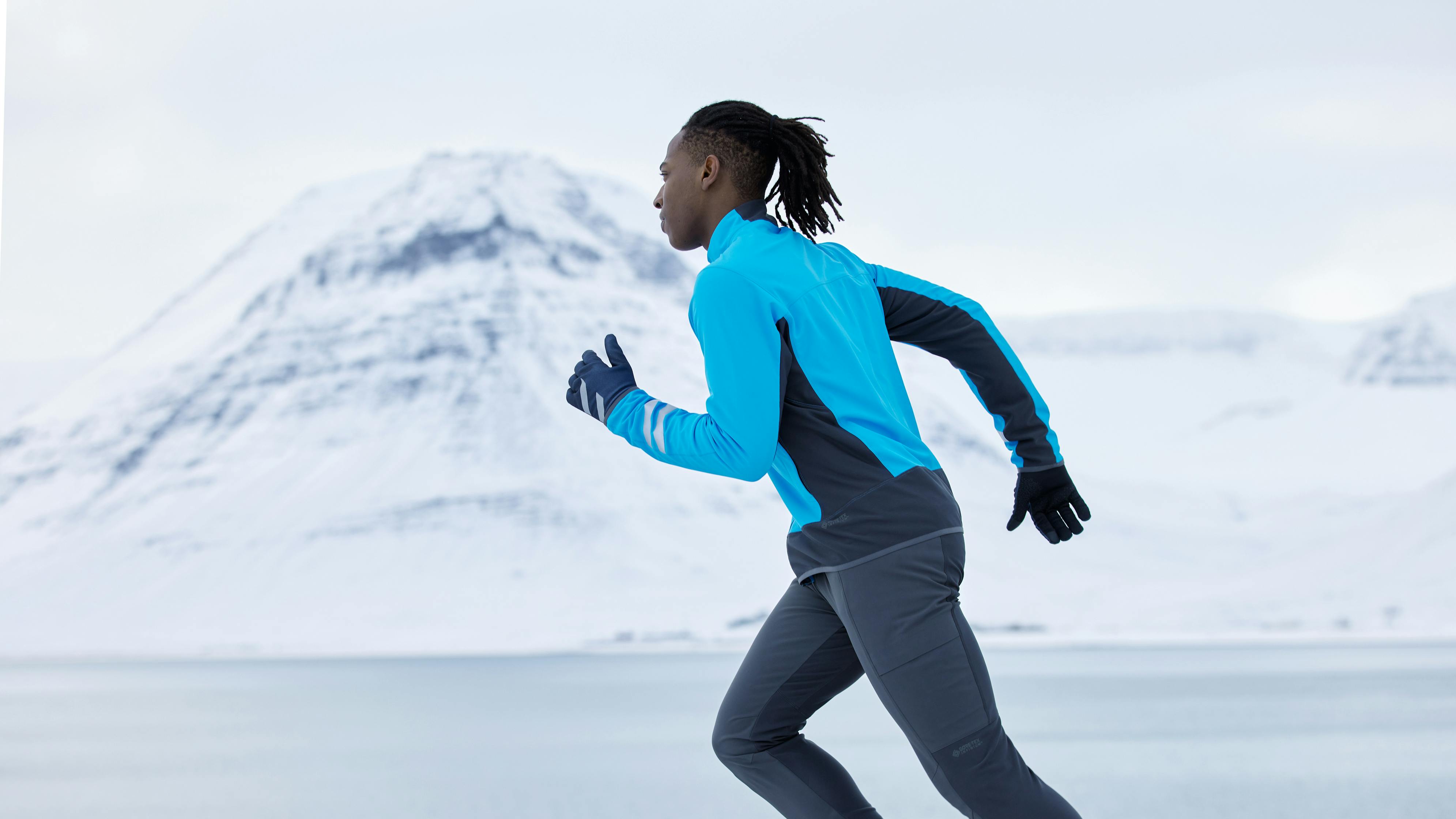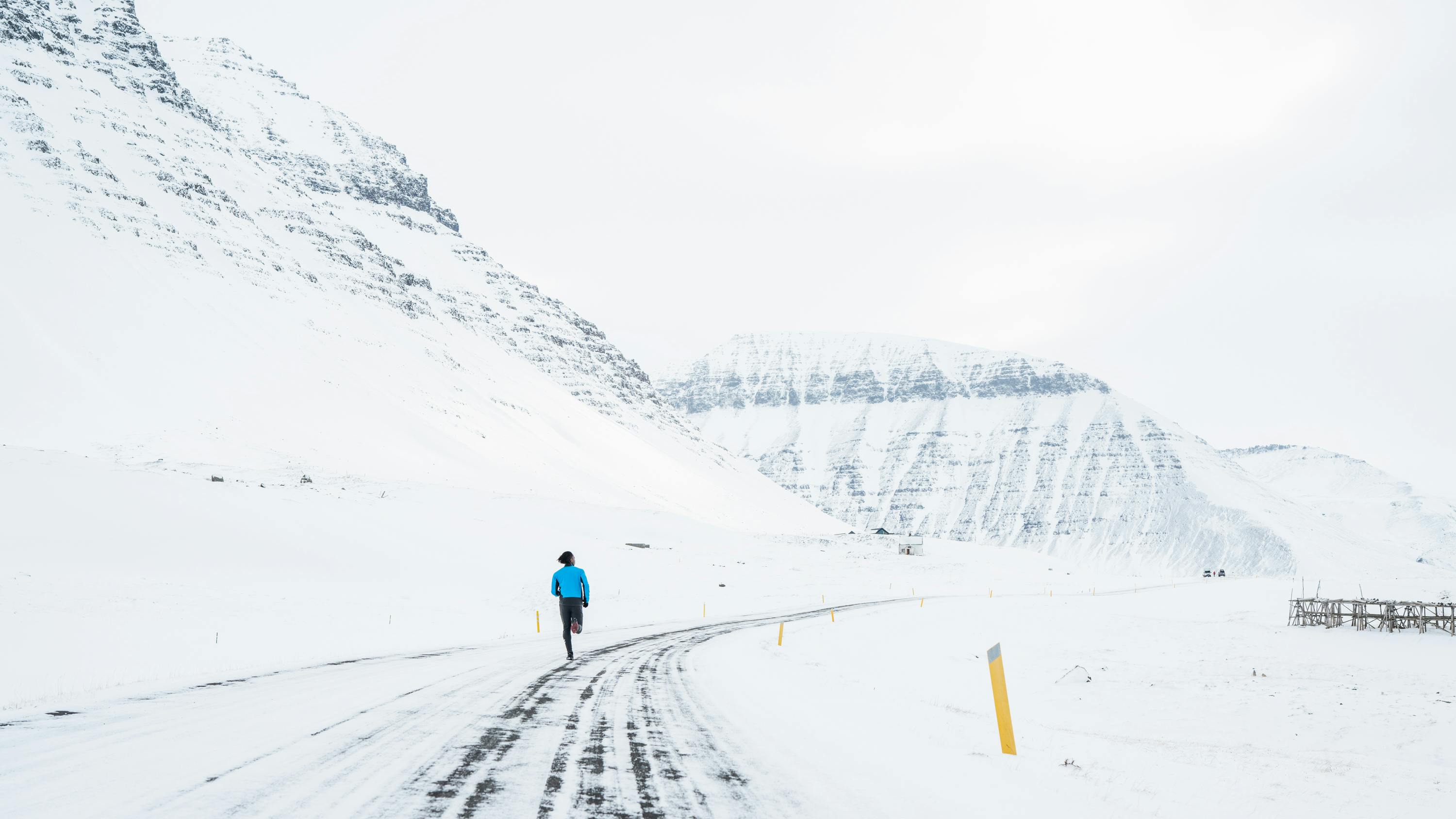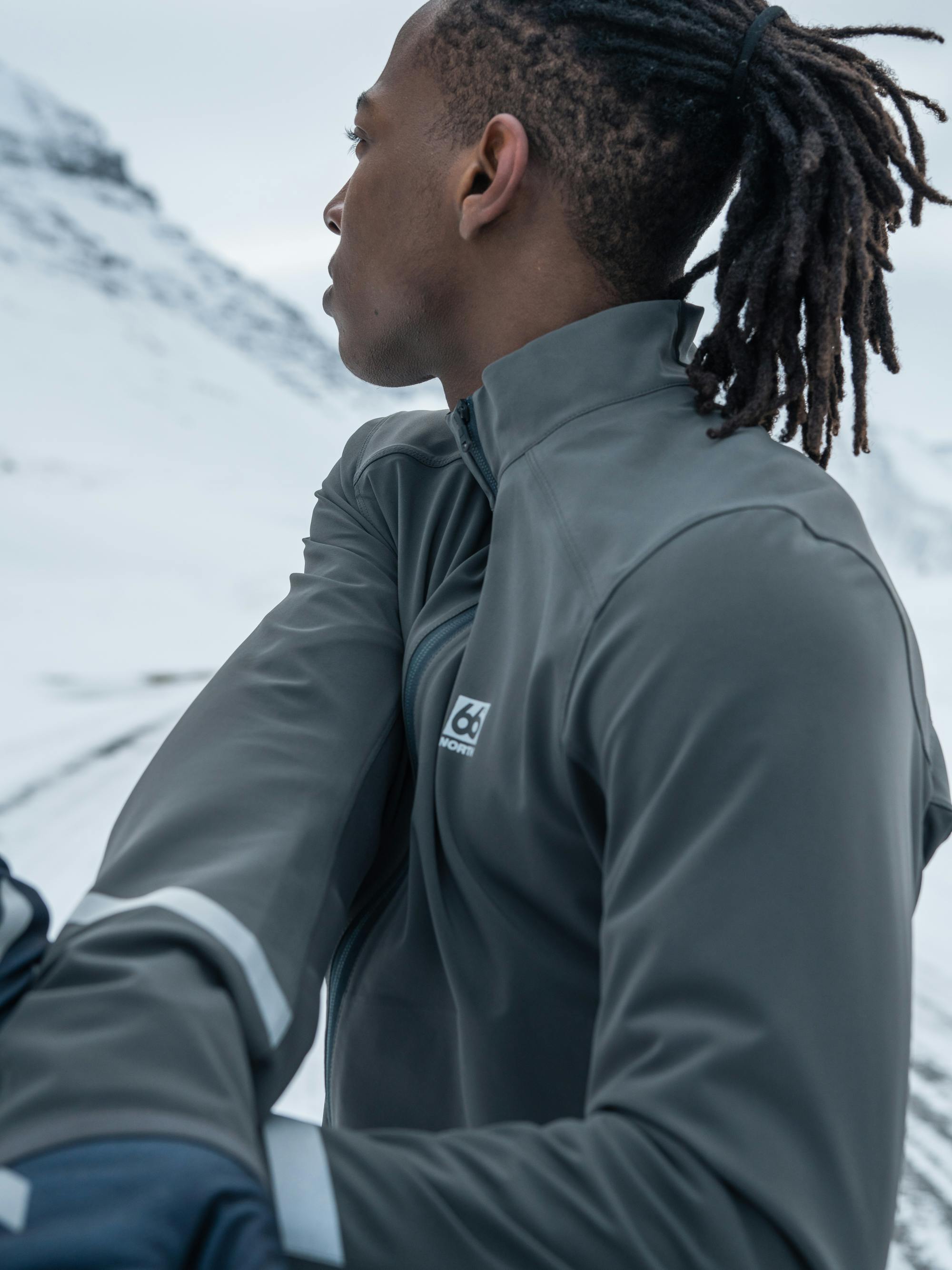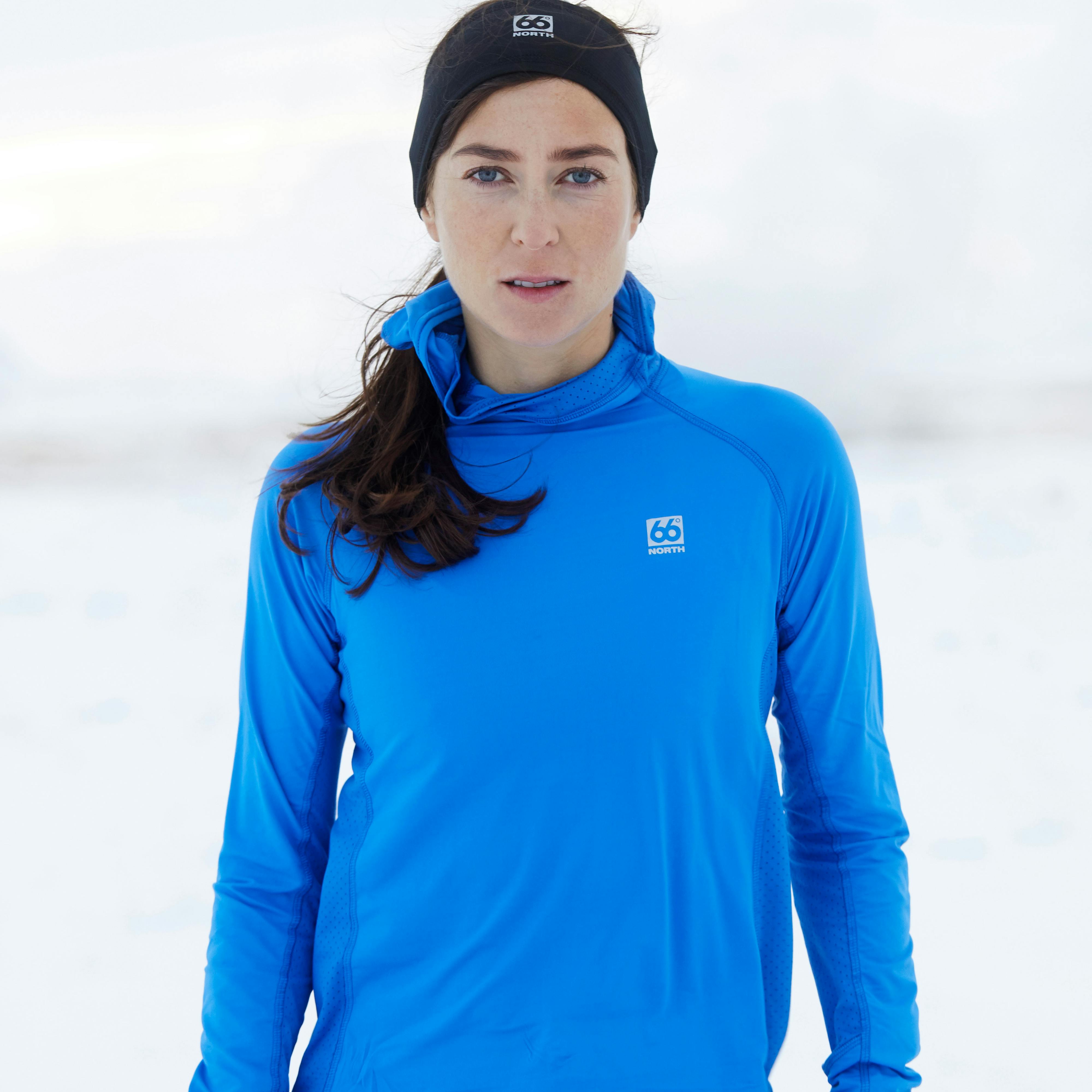
Winter running
Running below freezing (-10˚C / 14˚F)
Running in freezing conditions is something that runners in the North are very familiar with. With a long winter and a short summer, it becomes important to be able to train in any kind of weather. Therefore, layering correctly for the cold is an art of balancing the right amount and types of technical layers.
It's generally recommended to wear fewer layers, made from synthetic materials, instead of many layers with natural materials such as cotton.
When preparing for a run in a below-freezing temperature (-10˚C / 14˚F), the first thing you want to make sure of is to wear a good base layer. The base layer is the foundation of layering, as a poor base-layer can render the most expensive outer layers useless, and its main role is to wick sweat away from your skin to help your body maintain its regular temperature. Recommended base-layers for -10˚C / 14˚F would be the Básar merino wool top, a zip neck or crewneck. The merino wool in the Básar base-layer is extremely efficient in generating warmth while you run as the fibers of the wool trap air, which helps to retain warmth. Using a single shell outer-layer can do the job for many, but some might want to wear an insulated outer-layer or an extra layer underneath their shell. Keep in mind that you need to factor in the intensity of your exercise when choosing your layers; more intensity, lighter layering.




Appropriate accessories are a necessity when running in colder conditions since both your hands and feet play a big role in regulating your temperature. A proper hat, gloves, neckwarmer, and sometimes thicker socks are all things you want to consider when running in winter conditions. Being well equipped with accessories means you have the ability to adapt to the weather while on the run.
When running below freezing, there's always a risk of slippery surfaces. Therefore it is recommended to use running crampons.
Öxi Primaloft jacket is very well suited for running in colder temperatures, having a silver lining to reflect heat back to the body and therefore creating more warmth while transporting away vapor to keep you dry.
“It works best to wear as many thin layers as possible and avoid cotton materials. A good hat, gloves and neck gaiter are extremely important for trips in these winter conditions,” says Elísabet.
Winter running guide
Training in any weather

Staðarfell is made from Polartec NeoShell, the world’s most breathable, waterproof fabric. If it’s a little above 0˚C/32˚F we recommend Grettir zip neck, made from Polartec Power Dry fabric underneath. If a bit below 0˚C/32˚F we recommend Básar merino wool base layer.

Whether it’s wintertime in North America or spring in Europe, or even a cold Icelandic March morning, training through these blurred seasons will help you progress far better. Find your high-performance active gear on 66north.com